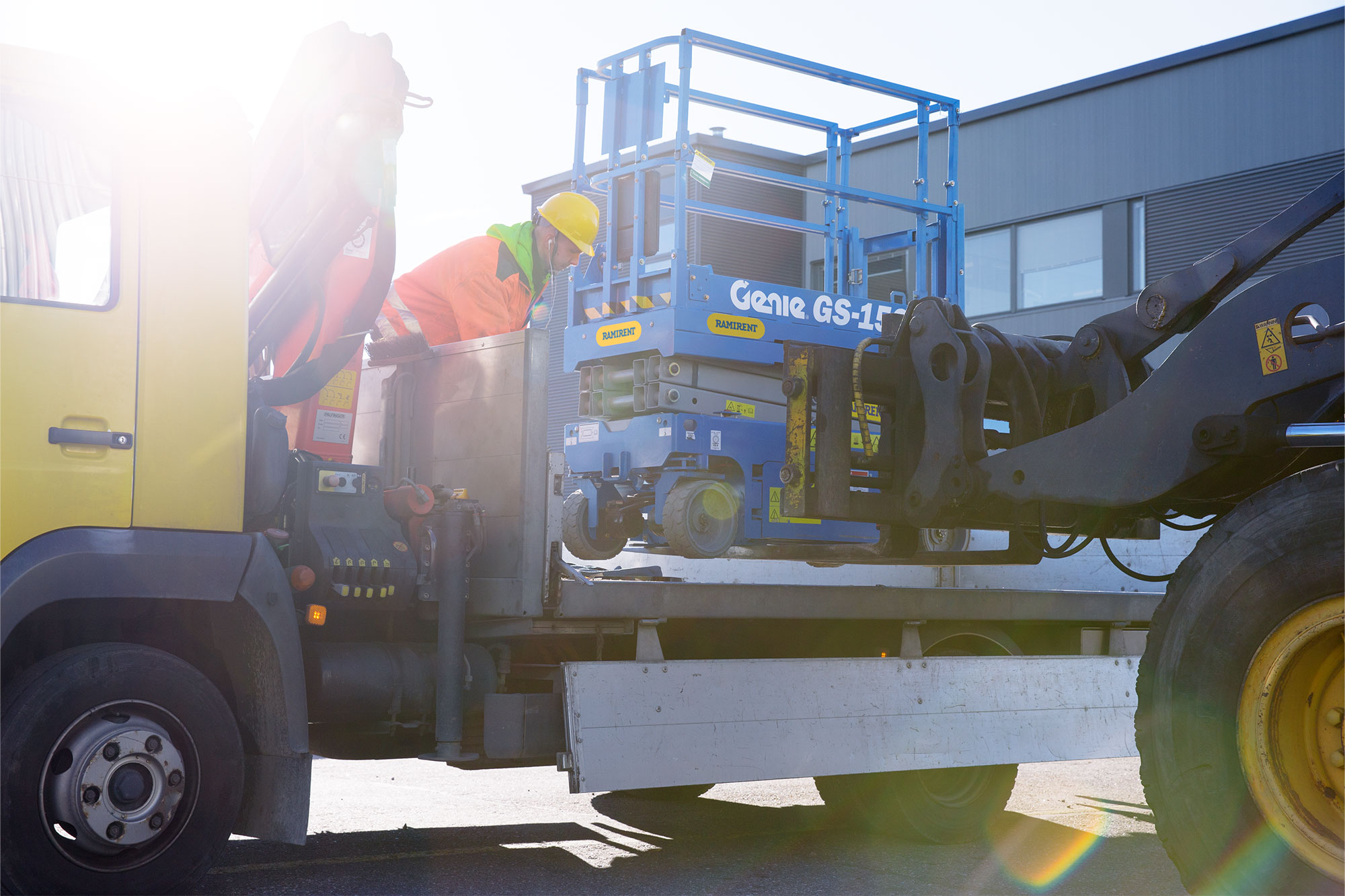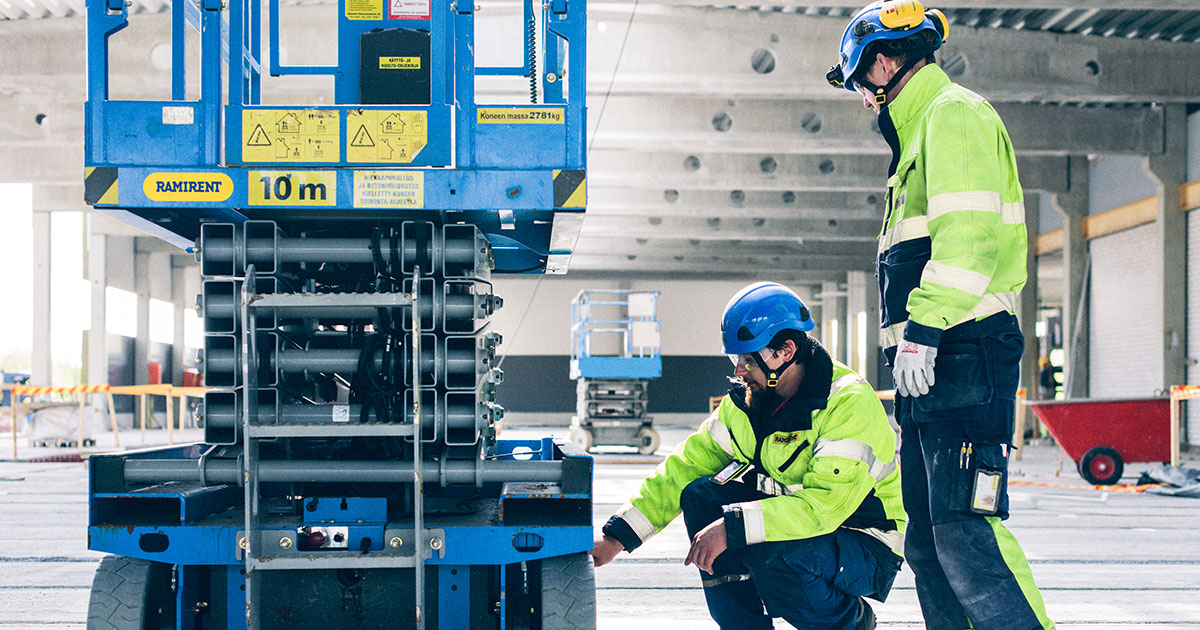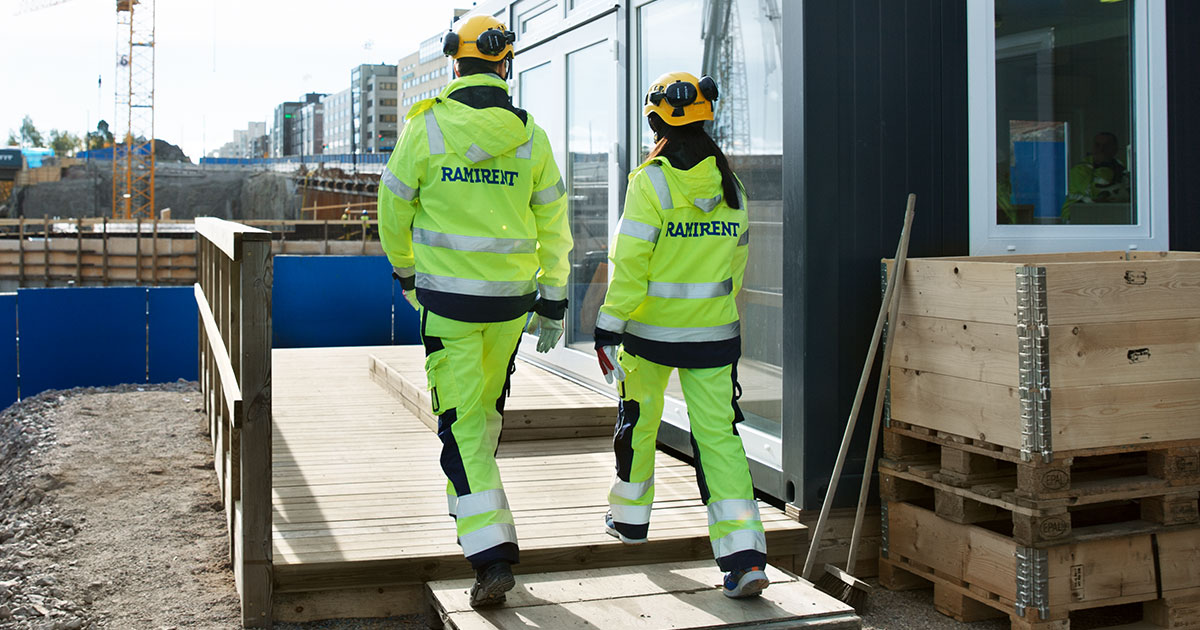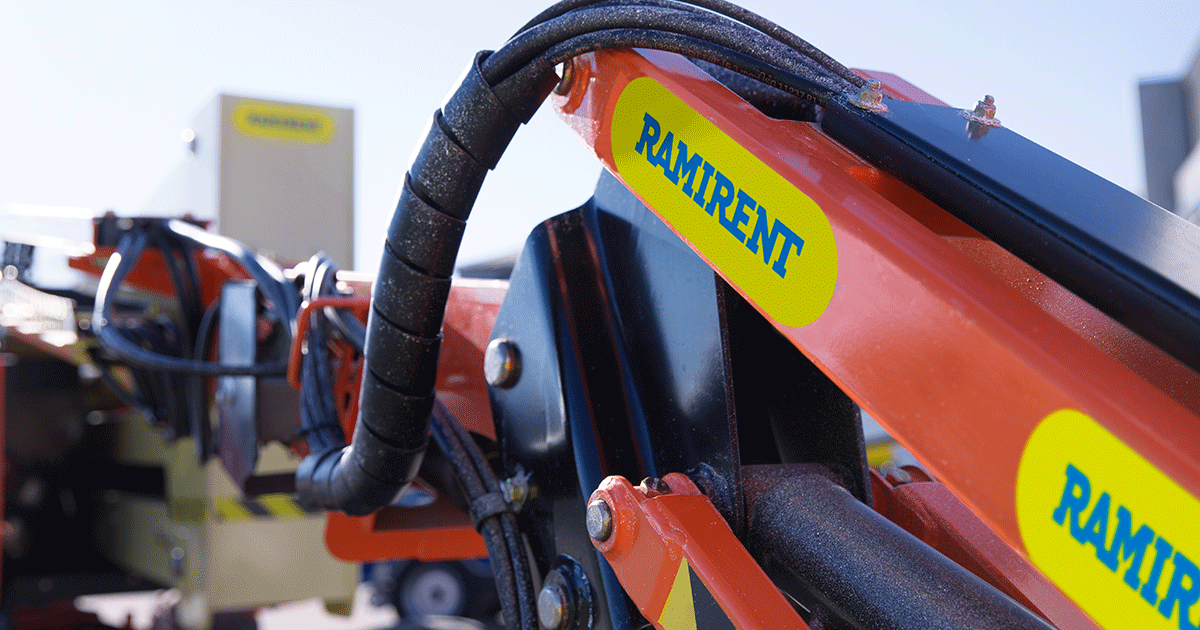Massive impact on Ramirent’s business through digitalised order management

Solita designed and implemented the digitalisation of Ramirent Finland’s entire order chain with modern low-code tools. Their new Rami X system is the core of order management and significantly increases the transparency of the order process.
This is an extremely business-critical and innovative solution. In a short period of time, we have gained access to data that we can use to understand what is really happening.

Arto Järvinen Sales Support Manager, Ramirent
-
Significant boost in transparency in Ramirent’s order process
-
Up-to-date data will help Ramirent in future business development
-
System project with a significant impact on Ramirent’s business and management
-
Real-time flow of order information across the order chain
-
Increased security of supply for Ramirent customers
-
Improved and clarified stock management
Ramirent provides versatile equipment and tool rental services to construction companies as well as industry and event operators in Northern Europe. Their wide range of rental products is distributed into a network of local rental offices and regional hubs. Recently, customer needs have become more demanding from the perspective of order management. In addition to the selection of the local rental office, orders require that the entire rental network is used seamlessly.
In recent years, Ramirent Finland has invested heavily in digitalisation but was lacking an overview into order management. The purpose of the Rami X project was to create an “end-to-end digital order pipeline”, that is, to digitalise the chain of operations from the receipt of a customer’s order to the delivery of the customer’s required products and services.
“Order management is at the core our business. Everything we do goes through this system. So many people use it a lot on a daily basis. Therefore, the system is incredibly business-critical,” says Järvinen from Ramirent.
Digitalisation of order management – not just digital
Ease of use and reliability were at the core of the project, which was identified as critical in the initial stage: the new services had to be easy to adopt and stable in use. The point wasn’t to digitalise existing ways of working but to re-create processes.
We were bold to change processes in which we identified room for improvement. This was challenging but ultimately a necessary for success.

Arto Järvinen Sales Support Manager, Ramirent
The project started with a service design stage, in which we observed the phases of order management from the perspectives of users, business and technology. Next, we came up with a target state for what the chain would look like when the new system is introduced. Achieving the target state required us to set up several new integrations between existing systems to implement the new operating methods.
“Integrations are always challenging from the perspective of project scheduling, and since the operating methods themselves also saw changes, we were really juggling quite many things,” says Solita’s Senior Project Lead Eeva Riistama.
“Considering the results, this approach turned out to be successful: our people thought that the new system was easy to use. And because the procedure was now better adapted to serve the needs of employees, we faced hardly any resistance to change during the deployment phase,” says Järvinen from Ramirent.



New heart of order management – Rami X
As an order management system, Rami X is very simple. It conveys information related to orders and deliveries and enriches it so that, for the first time, the ordering, picking, invoicing and logistics systems form a seamless digital continuum.
“We had already identified specific challenges in our own operations, but for the first time, we can study them and demonstrate the development needs based on data,” says Järvinen.
Everyone involved in order management now has an overview of the orders and the responsibilities related to the different phases of one order have been made clear. The quality, reliability and efficiency of customer service will improve when the process isn’t tied to certain people.
In addition to transparency, the accumulation of data is another key benefit of the project.
“The digital process leaves a footprint that can be analysed retrospectively. This isn’t possible in ad hoc communication. Previous point-based implementations didn’t support the data-based development of operations. Now, for the first time, that has been made possible,” says Joonas Juujärvi, Solita’s Business Lead.
The new order management system will significantly change the company’s operating culture, as order information flows digitally through the entire order chain and there is a view of several different warehouses from a single system. A more focused management approach that better considers overall efficiency will create more flexibility for future cooperation with, for example, the cyclical construction industry. Capital tied up in inventories is critical to business, so the accumulated data on utilisation rates and resource efficiency is extremely valuable.
Business-critical low-code
As a system project, the Rami X implementation was also technically particular. Ramirent had already been making extensive use of the Microsoft product family, so with Rami X, it was decided to implement the low-code implementation of the Power Platform and Azure cloud service tools. Information on orders, contracts and customers could, then, be directly retrieved from Microsoft’s Dynamics ERP system.
This is a complex package that breaks a lot of barriers. We managed to utilise the low-code platform in a very business-critical way, which made the implementation meaningful and interesting. So far, to my knowledge, Power Platform solutions of this size haven’t been created elsewhere in Finland.

Eeva Riistama Senior Project Lead, Solita
When the starting point of the project was to keep within the capabilities of the chosen platform, the solution proved to be quite functional for its size class. Low-code tools made the system development more efficient, but certain critical functions were created directly in Azure.
“This combination is an effective way to gain key benefits from both the low-code approach and the more traditional side of application development,” says Juujärvi.
Good team spirit, through the thick and thin
Ramirent’s Järvinen praises the team spirit during the project. There was significant time pressure and a lot of work to do on both sides. Despite that, the implementation remained on schedule and the new system was in use about a year after the project began.
“Cooperation with Solita was good, we had a consistent open connection. We had a clear common goal, and we kept up an excellent team spirit, even in tight spots. This project took a lot of effort, but everyone’s commitment has ensured that the goals have been achieved,” says Järvinen from Ramirent.
We knew from the start that this wouldn’t be an easy project – that is why, for example, in contract negotiations, we tried to anticipate every possible challenge and discussed openly about them. This made it significantly easier to handle the challenges that have arisen in practical work.

Joonas Juujärvi Platforms Business Area Lead, Solita
Transparency drives business
Over the past few months, the Rami X system has clearly reduced the amount of manual work at Ramirent. In addition, transparency in the order process has improved significantly. Security of supply has also improved.
“Transparency of the entire process is the biggest benefit for our business. This new way of working on an open platform has been a special and transformative experience as a whole,” sums up Ramirent’s Järvinen.
 Read more about our work with Ramirent
Maximising business impact: Designing internal services for success
Read more about our work with Ramirent
Maximising business impact: Designing internal services for success
-

Joonas Juujärvi Platforms Business Area Lead, Solita